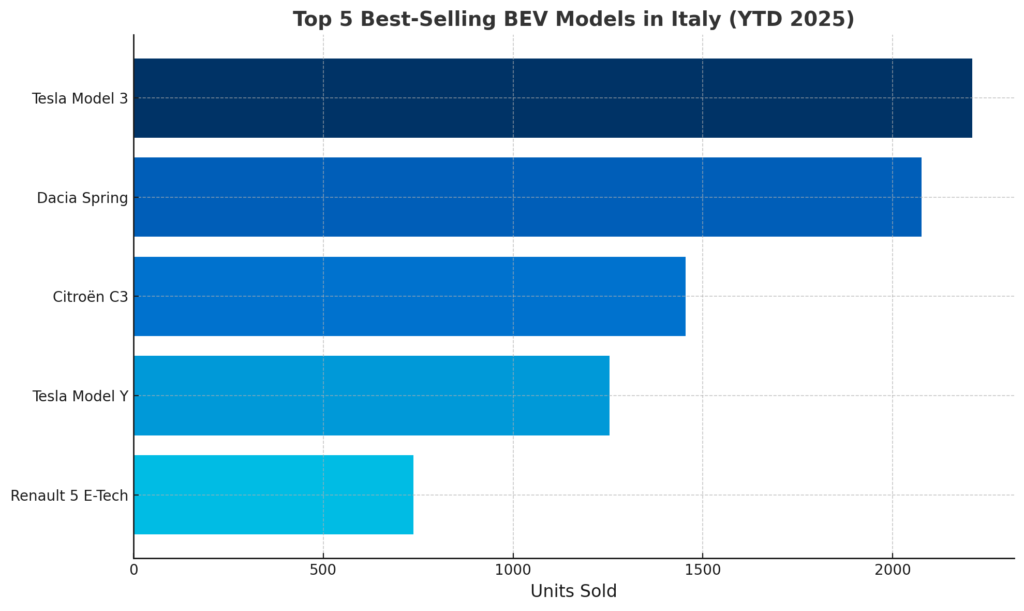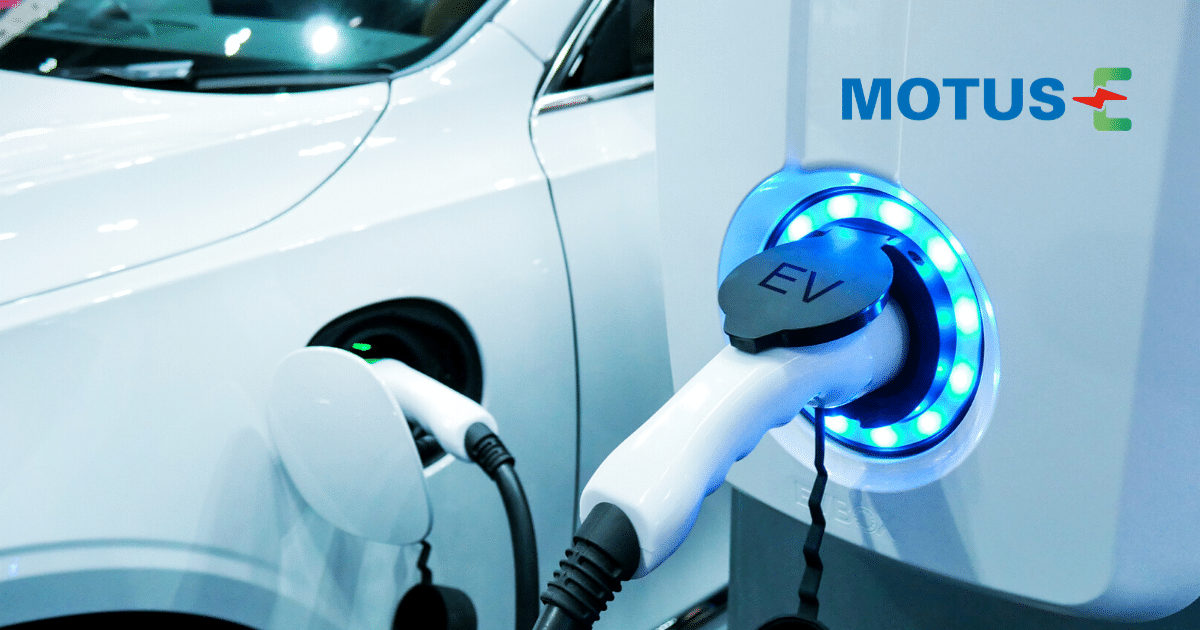In a European context pushing for energy transition in transport, Italy begins 2025 with clear signs of a breakthrough in its pure electric vehicle market. According to the latest figures, the country registered 9,373 BEVs in March, marking a 77.7% increase compared to March 2024.
This surge signals a turning point for a market that has so far lagged behind its continental peers.
In the first quarter (January to March), registrations of battery electric vehicles reached 23,019 units, representing a 75.4% year-on-year increase. Market share also rose to 5.2%, up from 2.9% in Q1 2024.

Despite the increase in electrics, the overall car market declined by 1.6%, with 445,772 units sold, reinforcing the notion that BEVs are starting to gain traction over combustion models.
“The Italian data from the first quarter invites a dual reading,” comments Motus-E President Fabio Pressi.
“On one hand, the delay in eMobility adoption compared to other major European markets is concerning, but on the other hand, positive signals for a potential recovery are strengthening.”
Tesla and Dacia Dominate the Rankings
The best-selling model so far this year is the Tesla Model 3 with 2,210 units, followed by the Dacia Spring (2,076) and the new Citroën C3 Electric (1,455). The Tesla Model Y (1,254) and the Renault 5 E-Tech (737) round out the top five.

This mix of premium and budget-friendly vehicles suggests that Italian consumers are increasingly viewing EVs as a viable option in both price and performance.
Private Buyers and Leasing Lead the Way
Private customers account for 43.66% of BEV purchases, while long-term leasing now represents 30.7%. This highlights the growing role of corporate fleets and flexible financing in supporting electrification.
“The surge in registrations is partly explained by the comparison with the first half of 2024, which was penalized by the wait for old incentives,” Pressi notes.
“However, in a context lacking concrete support for drivers, the BEV market share growth is remarkable—especially as more affordable European-made entry-level EVs are hitting dealerships.”
In contrast, direct business fleet purchases account for just 7.85%, showing room for policy-driven stimulation.
North and Center Lead Electrification
Regionally, Northwest and Northeast Italy lead with 7,482 and 6,225 BEVs registered respectively, followed by Central Italy (6,025). The South and Islands continue to lag behind, with only 2,241 and 1,046 BEVs respectively.
This disparity underscores the need for regional strategies that address infrastructural and economic gaps.
While the growth is promising, Italy remains behind Europe’s top performers. As of February 2025, Germany leads with 70,498 BEVs, followed by the UK (50,948), France (45,272), and Belgium (26,780). Italy sits in sixth place with 13,654, ahead of Spain (11,496).
Italy must accelerate to become a significant player in the European eMobility race.
Only 557 electric light commercial vehicles were registered in Q1, representing just 3.47% of the segment. Limited vehicle availability and insufficient tailored infrastructure remain barriers to wider adoption.
Over 64,000 Charging Points Installed
As of December 2024, Italy had 64,391 public charging points, installed across 33,414 infrastructures and 22,054 locations. This network is crucial to sustain BEV growth, although geographic imbalances still hinder nationwide accessibility.
“In this context,” concludes Pressi, “even a modest boost in demand could trigger a virtuous market chain reaction, with positive spillovers for charging infrastructure. We’ve seen this in other European markets: once a threshold is crossed and affordable models are available, EV adoption rises even without incentives—thanks to increased technological awareness. That’s the direction Italy must follow to unlock its full eMobility potential, particularly by leveraging company fleets.”








